Summer Activities at Oakhurst
With the growing season in full spring, the priority is to keep herbacious plants from seeding and producing the next generation.
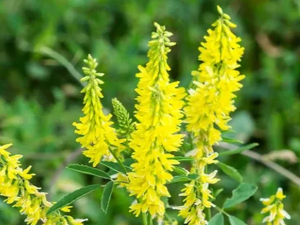
Pulling/Cutting Sweet Clover
Sweetclovers were brought to the US as a forage crop, but soon became invasive and now show up in our prairies. There are two species that are very similar in appearance, except for the difference in flower color, yellow and white. I have not spent much effort dealing with sweetclover, but as prairie plants become established, we it will become more of a priority. Sweetclover is a biennial and can be controlled manually by pulling or cutting the stem close to the ground.
Priority workzones: G1.1.1
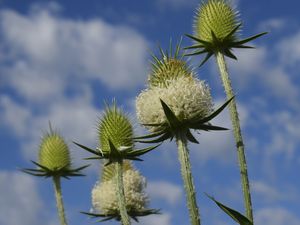
Teasel Fest
Oakhurst has a large population of cutleaf teasel located all around the sledhill, and most of summer is spent dealing with it. The plant is a monocarpic perennial - meaning it spends several years in the rosette stage, before it bolts, flowers, then dies. After flowering has started in July, you need to remove and bag every single flowerhead - and a single plant has many. Maturation of flowerheads is staggered, so a plant may continue to produce new flowers weeks after you visited it. Cutting the stalk or removing flowerheads too early will delay senescence (death), and promote a new flush of flowers 2 to 3 weeks later.
We are currently in the first of a three year contract to control teasel using Transline, and the results are promising.
Priority workzones: G1
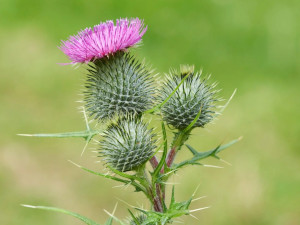
Cutting Bull Thistle
Bull thistle is a biennial that controlled by cutting the stem at the ground when buds are present but before it flowers. Plant should be rechecked for any resprouting. Severing the root a few inches below the ground is effective at preventing resprouts.
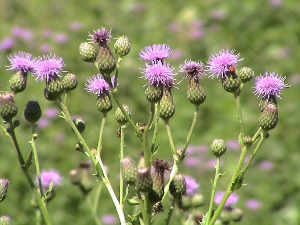
Cutting Creeping Thistle
In addition to bull thistle, Oakhurst is home to numerous populations of creeping thistle, also known as Canada thistle. This thistle is a perennial that spreads underground by rhizomes. After flowering in July, creeping thistle will produce numerous seeds that are distributed by wind, so the plant has the potential to spread far and wide.
While the best method of control is treating with herbicide in the fall, when the herbicide will spread to the roots, stems can also be repeatedly cut to prevent flowering and to drain resources.
Priority workzone: W1.3.2
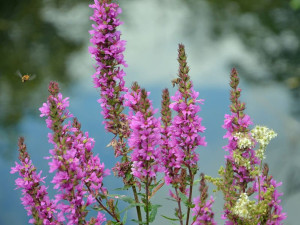
Purple Loosestrife
Originally from Europe, this wetland perennial is found in the wetlands at Oakhurst and around Lake Patterson , where it has the potential to crowd out native species.
Priority workzone: W1.3.2
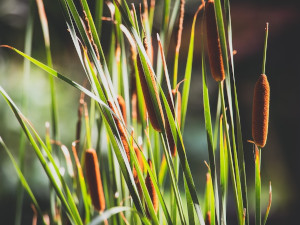
Reeds and Cattails
Giant reed and cattails are classified as emergent vegetation, plants that are rooted in marshes or shorelines, but their stems extend out of the water. While there are large monocultures of both plants at Oakhurst, these are beyond the ability of volunteers to control. However, smaller populations can be cut to reduce biomass, and sprayed with herbicide during the summer and fall.
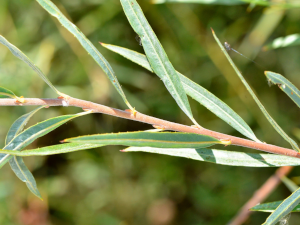
Willow Control
While sandbar willow is a native shrub, and a host plant for various insects, it can form colonies that takes over prairies to the exclusion of other plants. At Oakhurst it is common along the lakeside, and left to its own devices, will happily limit access for those wanting to fish. Therefore, there will be limited control of willow at key locations along the lake by cutting, and treating stems with herbicide.

 Volunteering
Volunteering Safety
Safety Wildlife
Wildlife Newsletter
Newsletter